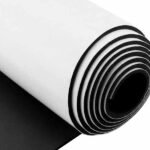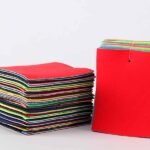Have you ever wondered if your neoprene waders can keep you dry during those long fishing trips? It’s frustrating to invest in gear that doesn’t perform as expected. Imagine standing knee-deep in cold water, only to find your waders letting you down. This common problem can ruin an outing and leave you searching for reliable solutions. But what if there’s a way to ensure your waders stay waterproof and keep you comfortable no matter the conditions?
Yes, neoprene waders are waterproof, offering excellent protection against water intrusion. Their unique material and construction make them ideal for various outdoor activities, ensuring you stay dry and warm.
Let me share a story about my first fishing trip with neoprene waders. I was skeptical at first, but the experience changed my perspective entirely.
What Are Neoprene Waders?
Neoprene waders are essential gear for many outdoor enthusiasts. But what exactly are they?
Neoprene waders are waterproof garments made from synthetic rubber, designed to keep your legs and lower body dry in wet environments.
Dive Deeper: Features of Neoprene Waders
Neoprene waders are crafted from high-quality neoprene material, which offers flexibility and insulation. This makes them perfect for activities like fishing, kayaking, and hunting in cold waters. The seams are typically sealed or welded to prevent water from seeping in, enhancing their waterproof capabilities. Additionally, they often include reinforced areas to withstand wear and tear, ensuring longevity and reliability.
How Waterproof Are Neoprene Waders?
The primary purpose of neoprene waders is to keep you dry. But just how waterproof are they?
Neoprene waders provide excellent waterproofing, effectively preventing water from entering through the material and seams.
Dive Deeper: Waterproof Ratings and Standards
Neoprene waders are tested against various waterproof standards to ensure their effectiveness. They often feature a high waterproof rating, measured in millimeters, indicating the pressure they can withstand before water starts to penetrate. For example, a rating of 20,000 mm means the waders can handle significant water pressure, making them suitable for deep water activities. Additionally, the construction techniques, such as glued and blind-stitched seams, contribute to their overall waterproof performance.
Are Neoprene Waders Fully Waterproof?
It’s important to understand the extent of waterproofing that neoprene waders offer. Are they completely impervious to water?
While neoprene waders are highly waterproof, no garment can be entirely impervious. Proper care and correct usage are essential to maximize their waterproof capabilities.
Dive Deeper: Factors Affecting Complete Waterproofing
Neoprene waders are designed to be waterproof, but their effectiveness can be influenced by several factors. Improper sizing can create gaps where water might enter. Additionally, wear and tear over time can compromise the integrity of the seams and material. Environmental factors, such as extreme temperatures and prolonged exposure to harsh conditions, can also impact their waterproofing. Regular maintenance and mindful usage are crucial to maintaining their waterproof properties.
What Makes Neoprene Waders Waterproof?
Understanding what makes neoprene waders waterproof helps in appreciating their functionality. What are the key components?
Neoprene material, sealed seams, and specialized construction techniques are the primary factors that make neoprene waders waterproof.
Dive Deeper: Material and Construction
Neoprene, a synthetic rubber, is inherently water-resistant and flexible, allowing for comfortable movement while providing a barrier against water. The seams of neoprene waders are typically sealed using methods like taping or welding, which prevent water from seeping through the stitching holes. Additionally, features like adjustable straps and waterproof zippers enhance the overall waterproofing by ensuring a snug fit and minimizing potential entry points for water.
Which Features Enhance the Waterproofness of Neoprene Waders?
Neoprene waders come with various features that boost their waterproof capabilities. What are these features?
Features such as sealed seams, waterproof zippers, and adjustable cuffs significantly enhance the waterproofness of neoprene waders.
Dive Deeper: Essential Design Elements
Sealed seams are crucial as they eliminate gaps where water can enter. Waterproof zippers prevent water from infiltrating through the zipper mechanism, which is a common weak point in waders. Adjustable cuffs and straps ensure a tight fit around the wrists and waist, reducing the chances of water seeping in. Additionally, some waders include integrated wade boots or stocking feet to further prevent water from entering through the footwear area, enhancing overall waterproof protection.
How Do Neoprene Waders Compare to Other Waterproof Materials?
When it comes to waterproof gear, neoprene waders are just one option. How do they stack up against other materials?
Compared to other waterproof materials like Gore-Tex or PVC, neoprene offers superior flexibility and insulation, making it ideal for colder environments.
Dive Deeper: Neoprene vs. Gore-Tex vs. PVC
Neoprene waders provide excellent thermal insulation, keeping the wearer warm in cold water conditions, which is a significant advantage over materials like Gore-Tex that prioritize breathability over insulation. PVC waders, while also waterproof, tend to be less flexible and more rigid, limiting mobility. Neoprene’s flexibility allows for greater comfort and ease of movement, making it a preferred choice for activities requiring prolonged mobility in wet environments. Additionally, neoprene’s shock-absorbing properties add to the overall comfort during extended use.
What Maintenance Practices Ensure Neoprene Waders Remain Waterproof?
Maintaining the waterproofness of your neoprene waders is essential for their longevity. What practices should you follow?
Regular cleaning, proper drying, and careful storage are key maintenance practices that keep neoprene waders waterproof.
Dive Deeper: Cleaning and Drying
After each use, rinse your neoprene waders with fresh water to remove salt, sand, and debris that can degrade the material. Use a mild soap or specialized neoprene cleaner to gently clean the surface, avoiding harsh detergents that can damage the waterproof coating. Thoroughly dry the waders away from direct sunlight and heat sources to prevent the neoprene from becoming brittle. Store them in a cool, dry place, preferably hanging to maintain their shape and prevent creases that could compromise waterproofness.
How to Test if Your Neoprene Waders Are Waterproof?
Ensuring your neoprene waders are still waterproof is crucial. How can you test their waterproofness?
You can perform simple tests like the water spray test or check for leaks by immersing them in water to verify their waterproof integrity.
Dive Deeper: Step-by-Step Waterproof Testing
- Visual Inspection: Look for any visible cracks, tears, or signs of wear on the material and seams.
- Water Spray Test: Spray water on the exterior and interior surfaces to see if any water penetrates.
- Immersion Test: Submerge the waders in water up to knee level and observe if any water seeps in.
- Pressure Test: Apply gentle pressure on the seams and zippers while submerged to check for leaks.
- Drying and Rehydration: After drying the waders, wear them and walk through shallow water to ensure they remain dry inside.
These tests help identify any weaknesses in the waterproofing, allowing you to address issues before they become significant problems.
What is the Advantage of Neoprene Waders?
Neoprene waders offer several benefits that make them a preferred choice for many outdoor activities. What are these advantages?
Neoprene waders provide excellent insulation, flexibility, and durability, making them ideal for various wet environments.
Dive Deeper: Insulation and Comfort
Neoprene’s thermal properties keep you warm in cold water, preventing hypothermia during extended periods in wet conditions. Its flexibility allows for a comfortable range of motion, essential for activities like fishing and kayaking. The durability of neoprene ensures that the waders can withstand rough terrains and frequent use without compromising their waterproof capabilities. Additionally, neoprene’s resistance to abrasion and tearing extends the lifespan of the waders, offering long-term value for outdoor enthusiasts.
What are the Cons of Neoprene Waders?
While neoprene waders have many benefits, they also come with some drawbacks. What are the disadvantages?
Neoprene waders can be heavier and less breathable compared to other materials, potentially causing discomfort in warmer conditions.
Dive Deeper: Weight and Breathability Issues
Neoprene’s density, while providing insulation and waterproofing, makes the waders heavier, which can lead to fatigue during long wear periods. The material’s limited breathability can cause overheating and excessive sweating in warmer climates, reducing overall comfort. Additionally, neoprene requires careful maintenance to prevent odors and material degradation, which can be more demanding compared to other waterproof materials like Gore-Tex. These factors may limit the suitability of neoprene waders for certain environments and user preferences.
How Do Environmental Factors Affect the Waterproofness of Neoprene Waders?
Environmental conditions play a significant role in the performance of neoprene waders. How do these factors impact their waterproofness?
Extreme temperatures, UV exposure, and abrasive environments can affect the waterproof integrity of neoprene waders, requiring proper care and usage.
Dive Deeper: Temperature and UV Exposure
High temperatures can cause neoprene to lose its flexibility and degrade the waterproof coatings, while extremely cold conditions can make the material brittle. Prolonged exposure to UV rays can weaken the neoprene, leading to cracks and reduced waterproofness. Abrasive environments with sharp rocks or debris can puncture the material, compromising its ability to keep water out. To mitigate these effects, it’s essential to store neoprene waders away from direct sunlight, clean them regularly, and inspect for damage after use in harsh conditions.
Conclusion
In summary, neoprene waders are a reliable choice for those seeking durable and waterproof gear for various outdoor activities. Their excellent insulation, flexibility, and robust construction make them ideal for fishing, kayaking, and other water-based adventures. However, it’s essential to consider factors like weight, breathability, and environmental exposure to ensure they meet your specific needs. At Szoneier, we specialize in high-quality neoprene products tailored to your requirements. With our 20 advanced production lines and commitment to quality, we provide customizable neoprene waders that stand up to the toughest conditions. Whether you’re a brand owner, wholesaler, or design firm, our flexible customization options and competitive pricing make us the perfect partner for your business.











